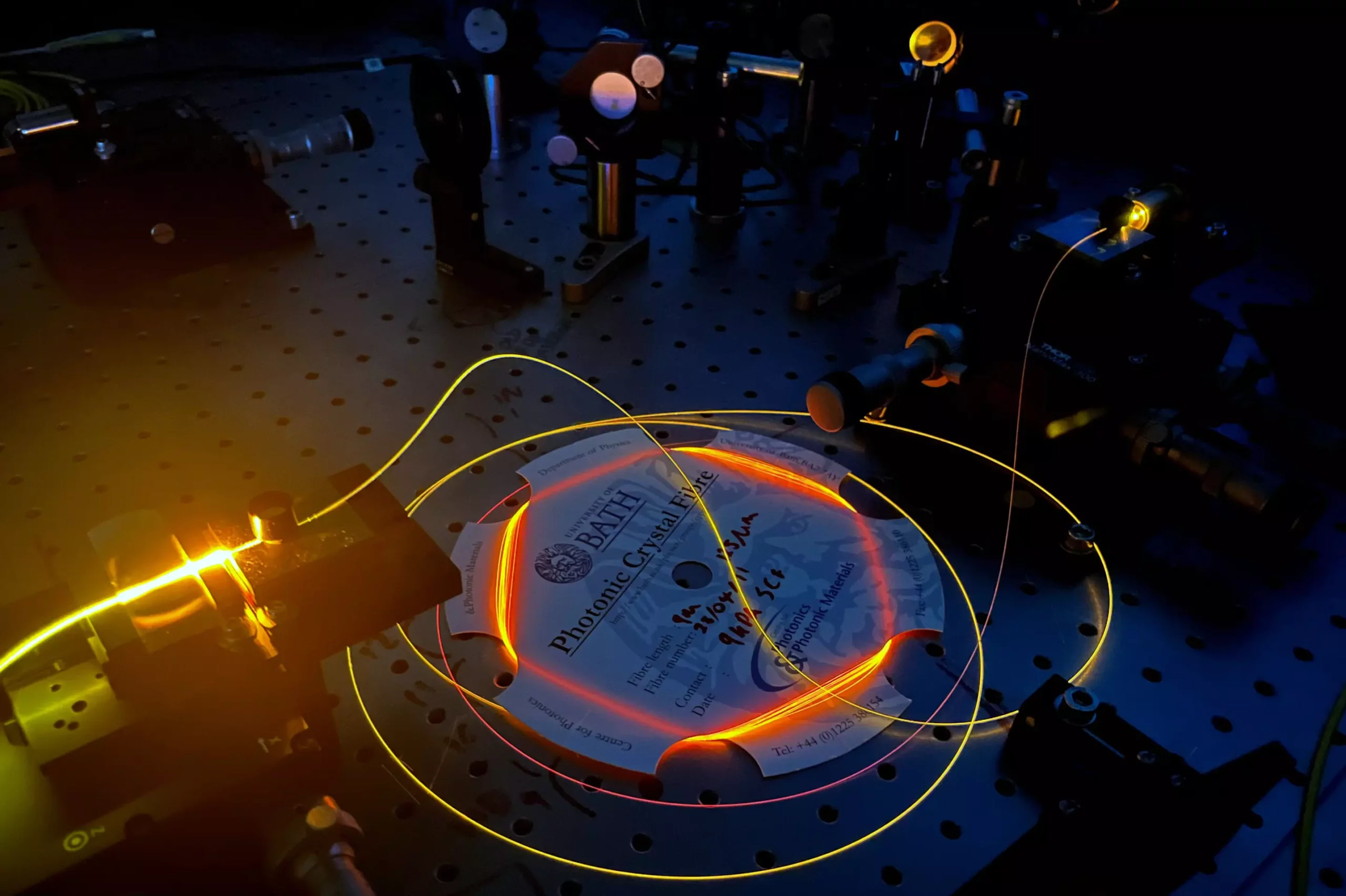The advent of quantum computing has heralded a new era of technological advancement, one that promises unmatched computational capabilities that could radically transform diverse fields—from medicine to cryptography. Yet, the underlying infrastructure required to support this revolution remains a critical hurdle. Researchers at the University of Bath in the UK have risen to this challenge by developing advanced specialty optical fibers specifically designed to optimize data transmission in a future dominated by quantum technologies. These fibers, with their unique micro-structured cores, present a substantial upgrade over traditional optical fibers, which will likely fall short in meeting the demands of quantum information transfer.
The operational issues of conventional optical fibers primarily stem from their reliance on silica glass, which imposes limitations on the wavelengths they can transmit. Dr. Kristina Rusimova from Bath notes that these limitations are incompatible with the light-based technologies integral to quantum computing. The newly developed fibers employ intricate designs featuring air pockets throughout their core, enabling them to manipulate light in ways previously unattainable. This innovation not only enhances their performance but fundamentally redefines how data can be transmitted across the network.
The Power of Photons in Quantum Technologies
At the heart of quantum technologies lies the photon—nature’s smallest packet of light, which possesses extraordinary quantum properties. Unlike classical bits that exist as either ones or zeros, photons can exist in superposition, simultaneously representing both states. Such capabilities allow quantum systems to operate at a computational power level far beyond that of any classical machine. Quantum entanglement, a phenomenon where pairs of entangled photons can influence one another regardless of distance, plays an essential role in establishing secure communication channels.
The implications of these advancements are profound. As Dr. Cameron McGarry emphasizes, the creation of a “quantum internet” is not merely aspirational; it is fundamental to unlocking the full spectrum of benefits that quantum technology promises. This new internet will necessitate the use of optical fibers capable of efficiently relaying quantum information from one node to another. The design and production of these fibers will differ extensively from those used in today’s telecommunications, marking a significant technological shift.
Addressing Challenges in Quantum Network Scalability
The researchers at Bath not only recognize the immense potential of specialty optical fibers but also grapple with the associated challenges of building a functional quantum internet. Their analysis identifies various obstacles that could hinder scalability and robustness in a wide-scale quantum network. By conceptualizing innovative solutions—ranging from long-distance communication fibers to specialty fibers capable of supporting quantum repeaters—the team has charted a path forward. This holistic approach ensures that both data transmission and computational capabilities can flourish within the same network environment.
Moreover, the idea that optical fibers could transcend their traditional roles to act as active components in quantum computation is genuinely groundbreaking. The ability of these fibers to generate sources of entangled photons, facilitate quantum wavelength conversion, and even serve as quantum memory vessels positions them as integral tools for future quantum applications. Such versatility mirrors the complexity and interactivity of quantum systems themselves, offering exciting possibilities that could expand the horizons of quantum computing and communication.
The Evolving Landscape of Quantum Fiber Research
The rapid strides being made in the field of microstructured optical fibers have garnered significant interest from various industries. Dr. Kerrianne Harrington has noted the potential applications that arise from integrating these innovative fibers into practical scenarios, emphasizing their relevance not just in academia but in commercial contexts as well. The fibers developed at Bath represent just one piece of a larger puzzle, but their success could catalyze further research and investment into quantum technologies.
Furthermore, as Dr. Alex Davis articulates, the fibers’ ability to confine and transport light over significant distances is crucial. This characteristic not only enables the generation of entangled photons but also allows researchers to explore exotic quantum states with potential uses in computing, precision sensing, and unbreakable encryption methods. Thus, the quest for “quantum advantage”—the goal of achieving superior performance through quantum devices—will be bolstered by these technological advancements.
The groundbreaking work being done at the University of Bath highlights a transformative period in optics and quantum computing, where the future of communication and computation appears limitless. Through careful examination of challenges and an inventive spirit, researchers are turning speculative possibilities into tangible realities, shaping a world where quantum interconnectivity is not only feasible but a driving force for innovation.

